Pollen and the pollen calendar.
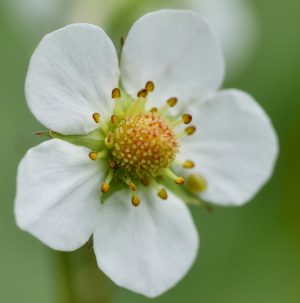
The pollen forecast across much of SE England this week is very high, according to the Met Office. Pollen is the ‘powdery material’ produced by higher plants (angiosperms and gymnosperms). It is made up of individual pollen grains, which are produced in the anthers⚘. When these anthers split open, the pollen grains are released and move by means of the wind or insects to the female reproductive structures (style and stigma in flowering plants, or the female cones in conifers etc). If a pollen grain lands on a compatible stigma or female cone*, it germinates - producing a pollen tube that transfers the male gamete to an ovule within the ovary. Individual pollen grains are small enough to require magnification to see any detail.
A pollen grain has two layers :
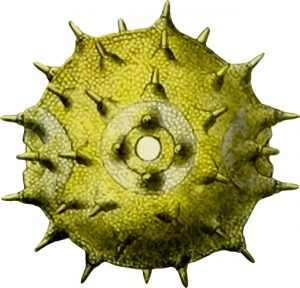 The outer layer of the pollen grain is called the exine and is made of a material called sporopollenin. This is a polymer (long chain molecule) made up of various organic molecules; it does not degrade easily. In fact, it can exist in the soil and sediments for hundreds if not thousands of years. The persistence of this outer wall of pollen grains enables scientists to identify species that were present in various sediments formed thousands of years ago. Under the electron microscope the exine has a sculptured, almost ‘sci fi’ appearance - with ridges, groves, spikes, and distinctive patterns across its surface - which are unique to each species.
The outer layer of the pollen grain is called the exine and is made of a material called sporopollenin. This is a polymer (long chain molecule) made up of various organic molecules; it does not degrade easily. In fact, it can exist in the soil and sediments for hundreds if not thousands of years. The persistence of this outer wall of pollen grains enables scientists to identify species that were present in various sediments formed thousands of years ago. Under the electron microscope the exine has a sculptured, almost ‘sci fi’ appearance - with ridges, groves, spikes, and distinctive patterns across its surface - which are unique to each species.
The inner layer of the pollen grain is the intine. It is made from pectin and cellulose; it has a role in the germination of the pollen tube.
Wind dispersal of pollen is referred to as anemomophily. 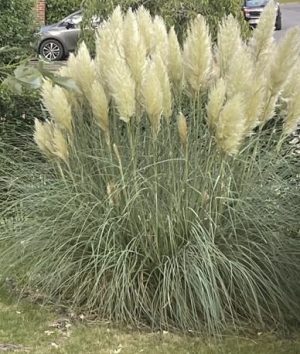 Anemophilous plants, like the grasses, generally produce large quantities of lightweight pollen. This is because wind dispersal is random and the likelihood of any one pollen grain landing on another compatible flower is remote, but the probability is increased by there being large amounts of pollen. The individual flowers of anemophilous plants are often small, inconspicuous but may collected together into significant structures (think pampas grass).
Anemophilous plants, like the grasses, generally produce large quantities of lightweight pollen. This is because wind dispersal is random and the likelihood of any one pollen grain landing on another compatible flower is remote, but the probability is increased by there being large amounts of pollen. The individual flowers of anemophilous plants are often small, inconspicuous but may collected together into significant structures (think pampas grass).
The pollen of insect pollinated flowers is relatively heavy and sticky (often protein-rich). The hind limbs of bees and bumblebees are modified for the collection of pollen - the pollen baskets or corbiculae. Each corbicula is a cavity surrounded by a fringe of hairs into which the bee places the pollen. Apart from this collection of pollen, pollen may be seen sticking to the hairs / the surface of a visiting insect.
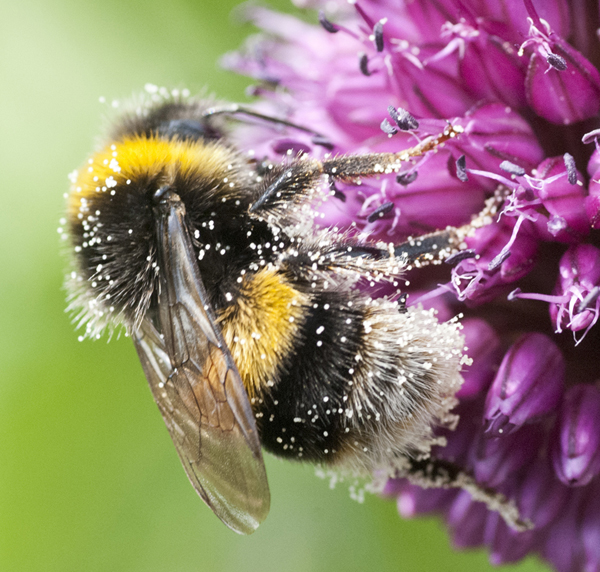
Bumblebee dusted with pollen
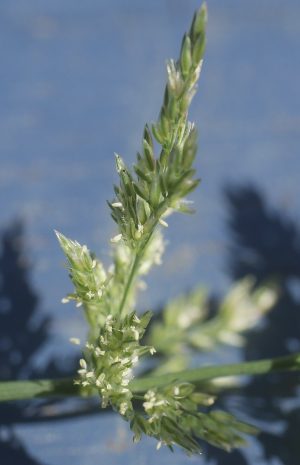
Grass inflorescence - with protruding stamens
Whilst pollen is generally harmless, there are some pollens which really ‘get up your nose’ - specifically
- Tree pollen, from trees such as Birch and Lime
- Grass pollen, from ryegrass and timothy
- “Weed’ pollen, from ragweed, mugwort, plantain, fat hen
These various pollens can cause allergic reactions when inhaled and the body’s defences are alerted. The defence reactions may include, sneezing, a runny nose, watery / inflamed eyes. Tree pollen tends to peak earlier in the year than grass pollen. Grass pollen is probably the worst offender when it comes to ‘hay fever’ / allergic rhinitis. The pollen calendar (courtesy of Kleenex) gives a seasonal guide to pollen by month and by area.
⚘ Anthers are the pollen producing tubes / sacs at the end of the filaments. Anther plus filament = stamen.
* Conifer pollen grains often have air ‘bladders’ which help with the ‘bouyancy’ of the grains so they are easily dispersed in the wind.]
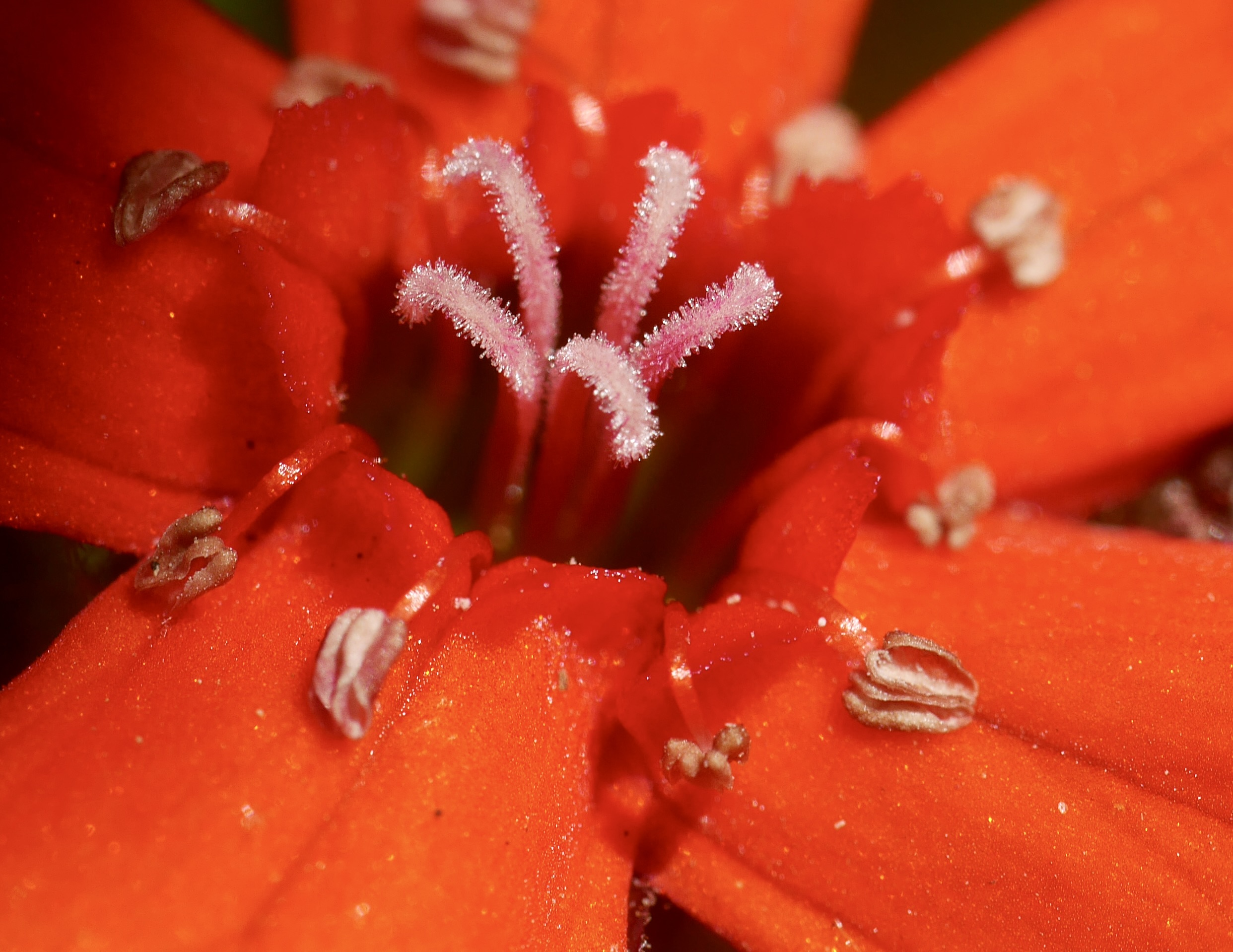
stamens that have released their pollen
Pollen grain image, thanks to Open ClipArt on Pixabay.
Comments are closed for this post.
